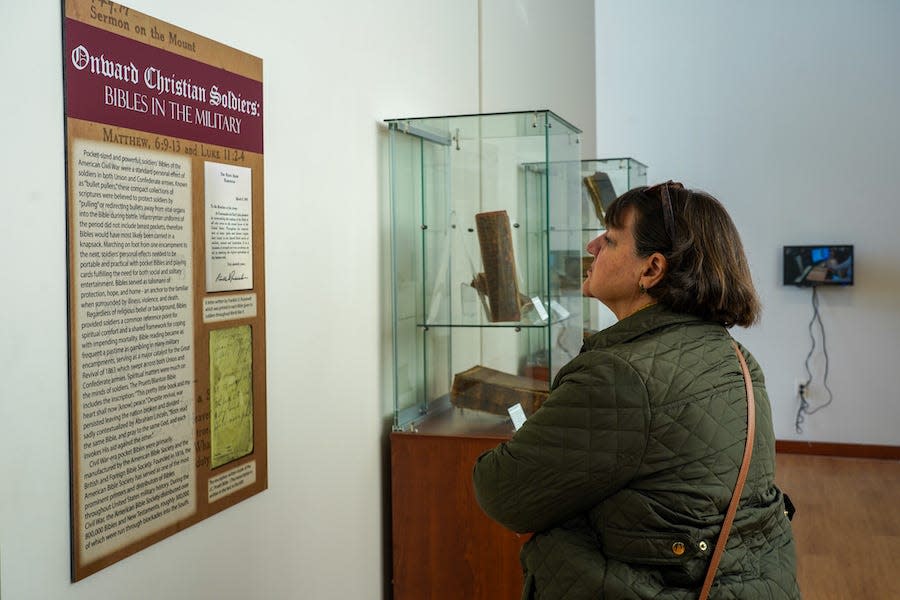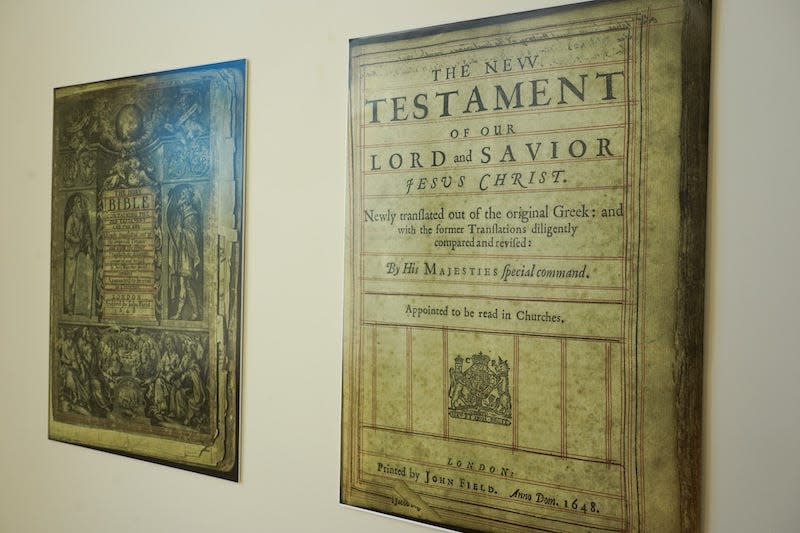Gardner-Webb exhibit features Bibles from the 19th, 20th centuries

- Oops!Something went wrong.Please try again later.
By the late 18th Century, Bibles had become treasured family heirlooms—not just for the spiritual aspect, but because the pages were used to record marriages, births and deaths. In recognition of the secular ways the Bible was used in the 19th and 20th centuries, Gardner-Webb University Archives and the Earl Scruggs Center of Cleveland County have created an exhibit: “Bound by Faith: The Bibles of Cleveland County.”
The exhibit, sponsored by the O. Max Gardner Foundation, will be featured through March 31 in the Ali Pouryousefi Gallery at Tucker Student Center.
The formal exhibit opening and reception will be held Feb. 17 from 3:30 to 5:30 p.m.
The idea was proposed by Earl Scruggs Center Curator Zach Dressel, who approached the University Archivist Dr. Natalie Bishop with the possibility collaborating on an exhibit that utilized artifacts held in both the Gardner-Webb University Archive and Cleveland County Historical Collections.
“I noticed that we had all these old Bibles in the Cleveland County Historical Collections, and I really wanted to find some way to display them,” Dressel said.
As Dressel and Bishop reviewed their collections, they decided to create an exhibit that examines how the Bible has been used in society outside the scope of Biblical or spiritual study. The exhibit focuses on the role of the Bibles as a tool for family record keeping, historical research, political ceremonies and in the military. Included in the exhibit is a range of Bibles dating from 1648 through the early 1900s.

Visitors can see the actual Bibles on display in protected cases and get a glimpse of the inside by viewing high-resolution scans of the pages.
Related GWU news: Gardner-Webb to add minority mentoring program
Gardner-Webb coverage: Community invited to attend Gardner-Webb’s annual Festival of Lights
The Bible used by O. Max Gardner when he took the oath of office as North Carolina governor in 1929 is included in the exhibit. Also featured is a scanned page from the family Bible of James Milton Webb, with notations by his great-granddaughter Fay Webb Gardner (wife of former N.C. Gov. O. Max Gardner and Gardner-Webb namesake).
Bibles of interest to genealogists include the Hamrick, Whitworth and Young Bibles, all of which contain extensive family history pages. The Hamrick Bible includes a rare feature in family Bibles—several pages of tintype photographs, which are also included in the display.
Panels also describe the importance and process of preserving Bibles for future generations. Included are videos demonstrating how artifacts, such as Bibles, are scanned and made available online. Visitors can learn about how to transcribe historical, handwritten family history pages and participate in transcribing Bibles in the exhibit.
This article originally appeared on The Shelby Star: Exhibit at Gardner-Webb features Bibles from the 19th, 20th centuries

